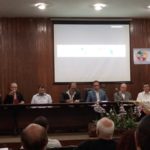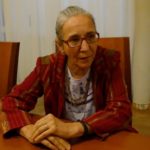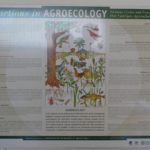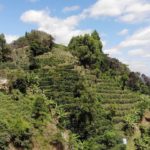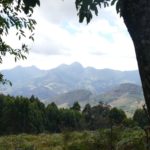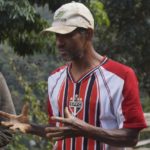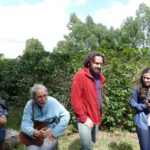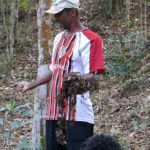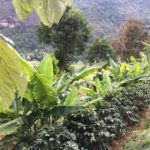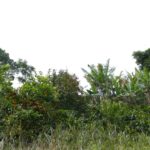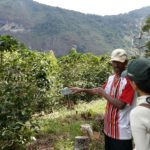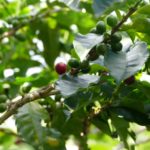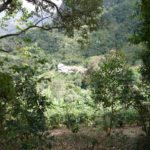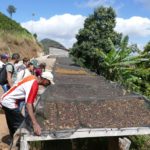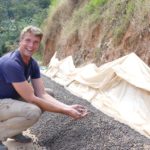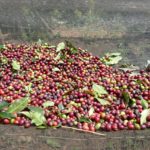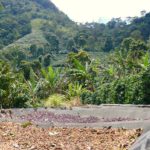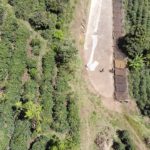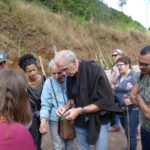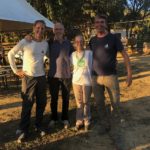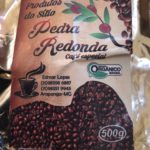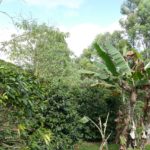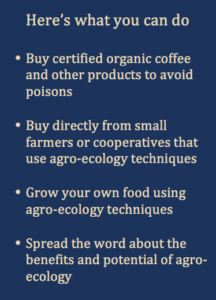Natural Coffee (BRA)
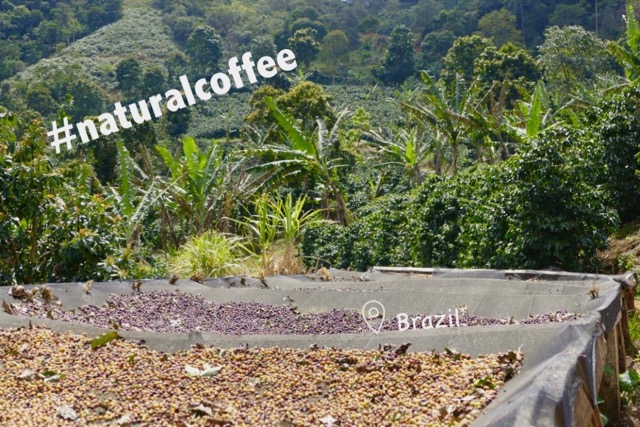
We visit a coffee forest in Brazil and learn all about the environmental and social benefits of agro-ecology. Surely the preferred way to feed the world!
Contributes to achieving the following UN Sustainable Development Goals:
“Do you prefer to rely on nature or on large chemical companies to grow your food?” Professor Irene Cardoso asks the audience. We attend a conference on future-proof agricultural models and see the advocate of ‘agro-ecology’ in action. “With agro-ecology techniques we can feed the world, tackle social abuses and respect nature,” she argues, garnering applause from scientists, students, farmers and activists. We are all ears. After having visited Ernst Götsch’s food forest farm, we’re eager to learn more about sustainable agriculture in Brazil. We left our boat in Rio de Janeiro and travelled eight hours inland by bus to the university town of Viçosa. We meet Irene after her opening speech. Can she explain to us what agro-ecology is?
Respect for Nature and People
“Agro-ecology emerged as a movement against industrial agriculture, the business model of which is based on monocultures and using of a lot of poison and synthetic fertilizer. Rainforest is destroyed for the plantations and the poison kills all soil life. Biodiversity is diminished, the water is polluted and the soil is depleted. A powerful coalition of large companies and governments that are influenced by them tells us that this is the only way we can and should feed the world. But that is simply not true”, Irene says.
“Agro-ecology stands for cultivating healthy food with respect for nature and people. The starting point is stimulating biodiversity both above and below ground. The knowledge of farmers is used to preserve and increase this biodiversity”, she continues. So agro-ecology is a movement, but also a practical approach, we understand. “Yes, but also a science”, Irene adds. “Agro-ecologists study the impact of applied practices on nature, the local economy and social conditions.”
Irene sees from our fuzzy looks that we need an example to fully understand it. “I’ll take you on an excursion to a coffee forest in Araponga“, Irene announces. “There you can see all aspects of agro-ecology at work.”
Natural Farming in the Coffee Forest
During the drive to Araponga, Irene explains that the University of Viçosa cooperates with local coffee farmers. “We showed the farmers different production systems. They applied them and we measured which techniques produce the most fertile soil and the highest yields.”
In the coffee forest we meet farmer Edmar Lopes. He shows us around while Irene provides translations and background information. In addition to many coffee bushes we also see bananas, fruit trees, plants and flowers. The forest at the top of the hill is also part of the plantation. “That’s why it’s a coffee forest,” Floris remarks with a smile. We learn that the diversity of plants and trees between and around the coffee bushes ensure a healthy ecosystem. The forest provides shade to the coffee bushes and fixes nutrients in the soil. Edmar uses the leaves and branches as fertilizer for the coffee bushes. He labels these coffee beans grown in this way ‘natural coffee’, and sells them for a good price.
Intelligent Nature
Irene has brought along her Dutch husband Arne Janssen, professor of ecology and specialized in biological pest control. Arne explains that nature has its own defence mechanisms. He picks a leaf from a coffee bush and points to small cavities in the leaves. “These cavities accommodate insects that are the natural enemies of a common coffee pest. The coffee bush has learned to defend itself. Nature is so much more intelligent than most people realize. To harvest healthy food, all we have to do is create the conditions for a balanced ecosystem. The plants, insects and birds can then fight harmful insects or diseases themselves”, he explains.
From the Slums Back to the Countryside
Irene explains that the coffee forest is not only ecologically sound, but also socially fair: “The model of land ownership here is quite unique for Brazil. Peasant families formed a cooperative to buy land together. The only land that the large landowners were willing to sell was deforested and exhausted. The families started using agro-ecology techniques to make the soil fertile again. Now that the farmers own the land, they could finally decide for themselves what to plant. They planted coffee beans for their income and vegetables and fruit for their own use. With a more diverse crop they save money shopping for food. And they are less dependent on the coffee market price for their livelihood.”
The farmers also lend money to other farmers to buy land, on the condition that they adhere to the same agro-ecology principles. It is a success. “Unemployed farmers return from the slums of Rio de Janeiro to start here on their own land and build a decent life”, Irene tells us. “Industrial agriculture needs large-scale businesses, monocultures and mechanization to be economically successful. Rural jobs are lost as a result, so many farmers move to the big cities in search for non-existent jobs and end up in slums.” It shows how important agriculture and land ownership are for the position of the poor in Brazil.
Small-Scale Farmers Make the Difference
According to Irene, small-scale farmers are the victims of unequal land distribution in Brazil. “It’s particularly harsh because small family businesses can feed the world!” she says, annoyed. Argentinian professor of agro-ecology Pablo Tittonell agrees. He also joined the excursion and explains that the majority of food is produced in non-Western countries. “Worldwide, 97% of farms are smaller than two hectares. The use of agro-ecology principles offers many advantages, especially for relatively small family farms,” Pablo says. “On such farms natural biodiversity is utilized at an optimal level, no agricultural poisons and synthetic fertilizers are needed. This not only saves the farmer a lot of money, it also leaves the soil healthier and biodiversity bigger. The yields are good and the farming families can eat from their own crops.” Irene adds: “Thanks to the biodiversity on farms, pieces of forest get connected, which makes migration of animals and plants possible again!” It becomes clear to us that agro-ecology is a win-win for both people and nature.
Agro-Ecology Is the Future
Back on board in Rio de Janeiro Ivar pours in another cup of delicious and fair natural coffee, made from beans from Araponga. “It’s hard to fathom that such a productive coffee forest started as an exhausted piece of land. And what a reassuring thought that these organic farmers also eat their own crops. Because who would spray their own food with agricultural poison?” he asks rhetorically. “Indeed, and who would have thought that agricultural techniques based on agro-ecology can combat poverty, urban crime, deforestation, soil erosion and loss of biodiversity?” Floris adds. “By relying on nature, we indeed could and should feed the world!”
Related Sustainable Solutions

Power to Perennials (USA)
Perennial grains: revolutionizing farming by nourishing the soil, capturing carbon, and securing our future food supply.

Smart with Seaweed (NZL)
In New Zealand we learn how seaweed can be used to improve soil biology, with significant environmental and economic benefits for all farm types.

Urban Gardening (NZL)
In New Zealand’s cities we discover various ways of urban gardening and learn about the many benefits of growing food in cities.

Improving Children's Health with Veggies (PER)
High in the Peruvian Andes, poor school children learn how to grow and cook healthy, organic veggies. An example for the world?

Meatless in Buenos Aires (ARG)
In the beef capital of the world, the tide is turning in favour of plant-based diets. Good news for human health, animals, nature, and the climate.

Alda's Organic Neighbourhood Farm (URY)
Organic farmer Alda explains how fertile soil enables her to grow food without poison, increases biodiversity, and has positive climate effects.

Natural Coffee (BRA)
We visit a coffee forest in Brazil and learn all about the environmental and social benefits of agro-ecology.

Food Forests (BRA)
In Brazil, Ernst Götsch explains to us how to grow healthy food in cooperation with the forest.

Bananalogic (ESP)
On the Canary Island of La Palma in Spain, we discover that the logical way to grow bananas is with butterflies instead of poison.

Olive Oil (GRC)
In Greece we take a closer look at olive oil, which is an integral part of Greek history and culture. We discover ways of growing olives sustainably.

Slow Food (ITA)
The Slow Food movement promotes food that is good for the consumer, good for the producer, and good for the planet.



